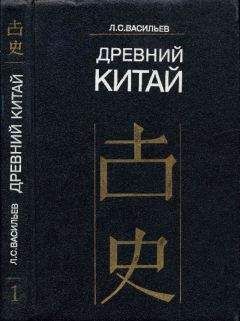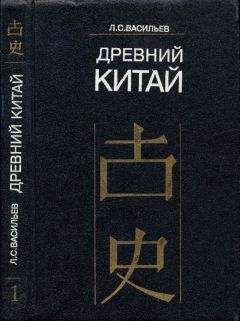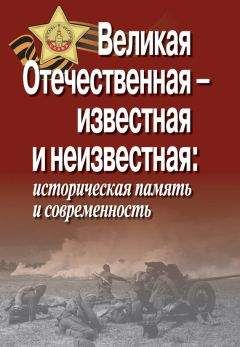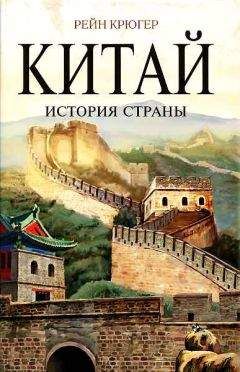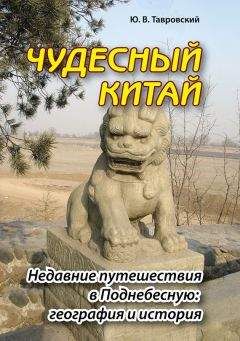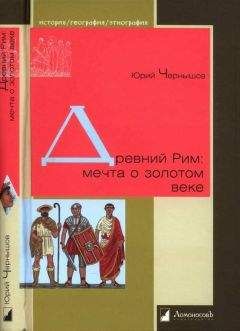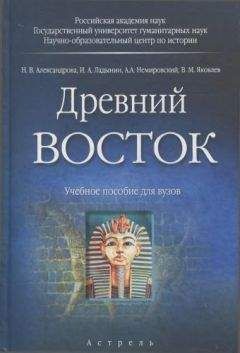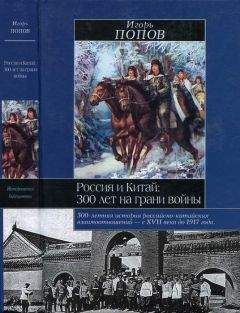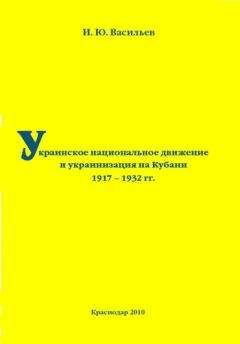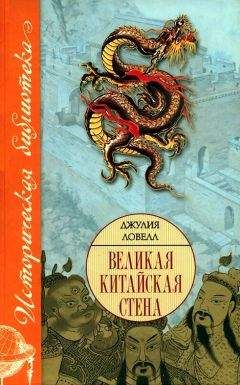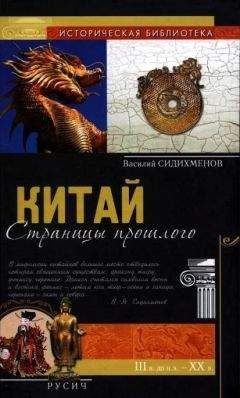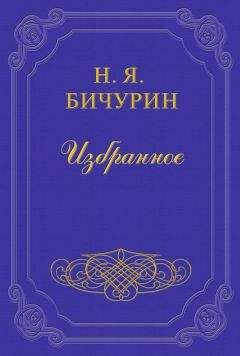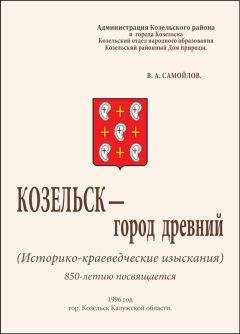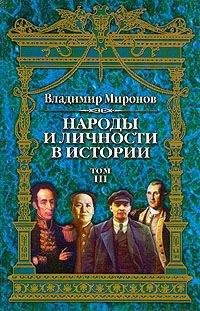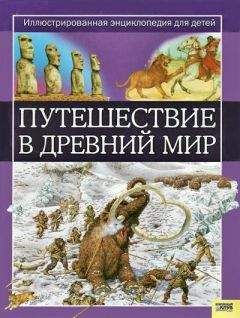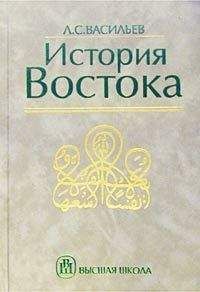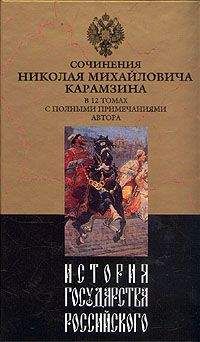Леонид Васильев - Древний Китай. Том 2: Период Чуньцю (VIII-V вв. до н.э.)
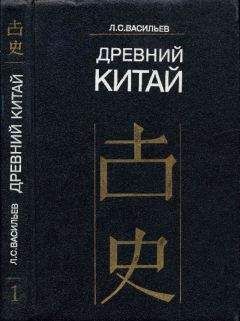
Скачивание начинается... Если скачивание не началось автоматически, пожалуйста нажмите на эту ссылку.
Жалоба
Напишите нам, и мы в срочном порядке примем меры.
Описание книги "Древний Китай. Том 2: Период Чуньцю (VIII-V вв. до н.э.)"
Описание и краткое содержание "Древний Китай. Том 2: Период Чуньцю (VIII-V вв. до н.э.)" читать бесплатно онлайн.
Том 2 трехтомника «Древний Китай» посвящен событиям периода Чуньцю (8–5 вв. до н. э.). Основное внимание уделено характеристике структуры китайского общества, в частности проблемам древнекитайского феодализма и дефеодализации чжоуского Китая.
222. Munsterberg O. Influences occidentales dans Tart de Г Extreme-Orient. P, 1909.
223. Nivison D.S. 1040 as the Date of the Chou Conquest. — Early China 8. 1982–1983.
224. Nivison D.S. Western Chou History Reconstructed from Bronze Inscriptions. — The Great Bronze Age of China. A Symposium. Los Angeles, 1983.
225. Pulleyblank E. Chinese and Indo-Europeans. — Journal of the Royal Asiatic Society. 1966, pt. 1–2.
226. Rickett W.A. Kuan-tzu. Hongkong, 1965.
227. Rotours R. La religion dans la Chine antique. — Brilliant M., Aigrain R. Histoire des religions. T. 1–2. P, 1953.
228. Saussure L. Le systdme cosmologique Sino-Iranien. — Journal Asiatique. T. 202, 1923.
229. Schafer E.H. Ritual Exposure in Ancient China. — Harvard Journal of Asiatic Studies. Vol. 14. 1951.
230. Schindler B. The Development of the Chinese Conceptions of Suprem Beings. — Asia Major. Hirth Anniversary Volume. 1923.
231. Schwartz B. The World of Thought in Ancient China. Cambridge, Mass, 1985.
232. Shaughnessy E.L. The «Current» Bamboo Annals and the Date of the Zhou Conquest of Shang. — Early China 11–12. 1985–1987.
233. Shaughnessy E.L. On the Authenticity of the Bamboo Annals. — Harvard Journal of Asiatic Studies. Vol. 46. 1986, № 1.
234. Shaughnessy E.L. The Origin of an Yijing Line Statement. — Early China 20. 1995.
235. Shaughnessy E.L. Military Histoires of Early China: A Review Article. — Early China 21. 1996.
236. Shah S.I. Oriental Magic. N. Y, 1957.
237. Steele J. The I-li, or Book of Etiquette and Ceremonial. Vol. 1–2. L, 1917.
238. Tempe R. The Genius of China. N. Y, 1987.
239. Tokei F. Sur le mode production asiatique. Budapest, 1966.
240. Tschepe A. Der T'ai-schan und seine Kultstatten. Jentschoufu, 1906.
241. Tschepe A. Histoire du royaume de Tsin (1106-452). Chang-hai, 1910.
242. Vandermersch L. Wangdao, ou La voie royale: recherche sur l^sprit des institutions de la Chine archaique. P, 1977.
243. Waley A. The Analects of Confucius. N. Y„1938.
244. Walker R.L. The Multi-States System of Ancient China. Westport, 1953.
245. Ware J.R. The Sayings of Confucius. N. Y, 1955.
246. Waterbury F. Burd-Deities in China. Ascona, 1952.
247. Wittfogel K.A. Oriental Despotism. New-Haven, 1957.
248. Wright H.K. The Religious Elements in the Tso Chuan. — Journal of the North China Branch of the Royal Asiatic Society. Vol. XLVIII. 1917.
249. Yabuuti K. Chinese Astronomy: Development and Limiting Factors. — Chinese Science (ed. by S.Narayama and N.Sivin). Cambr, Mass, 1973.
Условные сокращения
ОГК — Научная конференция «Общество и государство в Китае». М.
BMFEA — Bulletin of the Museum of Far Eastern Antiquities. Stockholm
Abstract. L.S. Vasiliev. Ancient China
This book is the second volume (Ch'un-Ch'iu China) of a three-volume publication about the history and culture of Ancient China. The first volume (Prehistory, Shang history and Western Chou history) was published in Moscow in 1995. The third one is being prepared and will be published in several years. This abstract contains a brief review of the contents and the range of problems of the first two volumes. The main purpose of this work is to give a more or less comprehensive characteristic of the ancient Chinese society and its history, the process of sociogenesis and politogenesis, formation of the basis of ideology and culture and establishing traditions. Special attention is given to the genetic links and outside influence that took place during this complex process. The presentation starts with the prehistory of China and finishes with the composition of the empire. The first two volumes are dedicated to the period before the 5th century ВС.
The first volume starts with the presentation of prehistory problems. Chinese archaeology has achieved considerable successes. Since they are well-known it spares us the need to represent them in detail. Interpretation of data obtained by archaeologists and anthropologists is another thing. Personal positions of various specialists may sometimes be completely the opposite. The contents of the first volume are not fully identical to the notions which the majority of specialists tend to adhere to, especially in the CPR. In particular, there are serious grounds to think that a sinantrop was a dead-end branch of the gominid line, although its descendants could have played an important role in the process of miscegenation with migrants from the West. The latter moved along the steppe line and reached America via Bering Isthmus, which is a well-known fact. The finds of the first sapient people on the territory of northern China (the three skulls from the grotto Shangt'ingt'ung) testify the lack of racial distinction or any resemblance to Mongoloid characteristics in each of them. As far as Neolith is concerned, there are no traces of Neolithic revolution on the territory of China. Despite its considerable specifics, the earliest of Neolithic cultures, Yangshao, which ascends to approximately the 6th-5th millennia ВС, belongs to a series of Eurasian cultures of painted ceramics that are well-known to archaeologists according to a number of important enthnogenetic characteristics (paintings on ceramics and their main motifs). The second Neolithic culture, Lungshan, which superceded the first one at the end of the 3rd millennium ВС, was already familiar with the potter's wheel, cattle and cereals (wheat, barley), which were domesticated in the Middle East. This serves as a rather convincing proof of its origin.
The question is not that proto-Chinese did not contribute anything to the development of Neolithic cultures on their territory. On the contrary, they did a lot and ultimately created their own neolithic foundations for further development. But it is out of the question to consider the basis as a fully indigenous one. Bronze Age culture started to develop in Ancient China from the beginning of the 2nd millennium ВС on the basis of Yangshao-Lungshan Neolithic Age, first as an early stage (Erlitou-Erligang) and later as a late one (Anyang). It is possible to pose the question of north-western influence already with reference to the period of the early Bronze Age (18th-14th centuries ВС) which is represented by bronze arms and vessels. For decades experts wrote a lot about it. Approximately at the same time the first centers of still very primitive urban culture emerged, which were developed on the Ancient Chinese Neolithic basis. On the other hand, findings dating to the late Bronze Age from the excavations in Anyang amazed archaeologists. In late 20-s and early 30-s over a dozen of so-called royal tombs with plenty of bronze and other magnificently elaborated items, chariots with domesticated horses harnessed to them and a huge number of co-buried people were found on that territory. Also an archive was found, which consisted of hundreds of thousands of inscriptions written on scapula bones of ox and on turtle plastrons (about 1000 various drawing signs similar to pictograms altogether). Horses domesticated by Indo-Europeans, chariots with a lot of spokes invented by them and many other things leave no doubt that the origin of the Shang civilization was connected with at least some external influence. At the same time there is a doubtless Chinese component in this process, suffice it to say about silk, which had been already known in the Shang China.
From the inscriptions on the bones experts learned a lot about the Shang society and proto-state, which was located in the middle part of the Huang-Ho basin, a short distance to the north of the river. It was headed by a ruler-wang, who governed his subjects with the help of a large number of officials. Relatives of the ruler, who governed the regional subdivisions at the borders of the Shang proto-state, as well as the officials formed the top of society. They drove on chariots and headed troops in frequent battles with the more backward neighbours, who developed fast and selected their own leaders. Peasants worked in the fields, including big commonly cultivated ones, possibly, in the course of corve, and the crops from the fields went for ritual needs or to support the upper strata and their servants. Hunting, which alongside with other things was considered a good training for warriors, played an important role.
What calls to notice is the historical amnesia of the Shang people and the lack of mythology or any ideas about gods. In hundreds of thousands of brief inscriptions deciphered by specialists one can find addresses to the "upper ancestors" of the wang (ti or shang-ti) with requests of a current everyday character: about the crops, rain, victory over the enemy, successful delivery for the wang's wife, etc. But there is no mention of past glorious deeds, the events of a former period of time or clashes with enemies in the past. The people of Shang had no gods or temples devoted to them or priests serving them.
Chou, the ruler of one of the fast developing neighbouring tribes, married his son Ch'ang to the daughter of one of Shang aristocrats. Having become a ruler and adopting many elements of the Shang culture, including literacy, from his mother, Ch'ang did a lot to weaken the Shang people and conquer them. At the end of his long period of reign he even took the title of wang which was an open challenge to the Shang wang. But Wen — wang (Wen was his posthumous name which is familiar to every Chinese person) did not live to the desired victory. His son Wu-wang routed the Shang but died shortly after the conquest. Chou-kung, the brother of Wu — wang, became the regent of Wu's young son, Cheng-wang. It fell to his lot to organize the rule over the Chou people on the vast territory of the Huang-Ho basin where the defeated Shang (the Chou called them the Yin) were resettled, as well as tribes allied to the Chou lived.
Chou-kung together with his assistants, among whom must have been some literate Shang people that passed on to his service, skilfully used the historical amnesia and filled the existing vacuum with the concept of the Mandate of Heaven advantageous to the Chou. The essence of it was that the Shang ancestors, who lived in Heaven (the Chou did not have their own gods or deified ancestors), were not so much Shang ancestors as inhabitants of everyone's Heaven. That was only one step from deifying Heaven itself equal to Shangti, which began to be considered in singular person and as everyone's initial divine ancestor. It was upon Heaven (Shangti) that a decision to grant the mandate for the reign over T'ien-hsia ("Under the Heaven") to a worthy ruler and to revoke it from an unworthy ruler depended. Formerly, as it was stated in an ideologeme from the early Chou "Book of Documents" (Shu-king), there was a Hsia dynasty (the sign Hsia did not exist in the Shang inscriptions). But later the mandate of Heaven was revoken from the last and unworthy ruler of that dynasty and granted to the worthy forefather of the Shang dynasty. Later the mandate was revoken from the last unworthy ruler of the Shang and given into the hands of the most decent Wen — wang from the Chou. Thus the Chou got the power over T'ien-hsia not due to force or favourable circumstances but only due to the possession of a high sacred virtue-te (this sign did not exist in the Shang inscriptions).
Due to the ideologeme of the mandate of Heaven Chou-kung strengthened the power of Chou putting it beyond any doubt and forcing everyone to acknowledge the Chou wang as the Son of Heaven. It should be noted that since that time the Chou people began to pay deliberately extreme attention to history and secured for themselves and only for themselves the right for creating and interpreting it. Nevertheless, this did not help them much in organization of political administration on the huge territory they possessed at that time. Since there was no more or less developed infrastructure in the Huang-Ho basin and the semi-primitive Chou people were not numerous, they could not reign over the huge military and political union created under their power, even with the assistance of the educated Shang serving them. Thus they had to create feudal-type appanages. These appanages were 7–8 dozens, the majority of them were distributed to the relatives of the ruling House of Chou. We learn about granting appanages as well as symbolic items from the inscriptions on bronze vessels, which represented important documents of a type of ritual communication between a suzerain and a vassal.
One or two centuries after Chou-kung, West-Chou China with the capital in the west, in the native Chou territories, turned into an array of influential feudal appanages, virtually autonomous realms and princedoms. Although several Chou rulers-wawgy made attempts to preserve their suzerainty relying on their 14 armies (six in the western capital and eight in the new eastern capital created by the efforts of the Yin people resettled to the area of Lo-yi), they obviously did not have enough strength. Eventually the last western Chou ruler Yu-wang was killed by jung barbarians attacking his capital after a conflict with his father-in-law (a powerful vassal) over the replacement of the latter's grandson and successor by the son of a favourite concubine. Afterwards the heir, who had almost been replaced, got the name of Ping — wang and was transferred to the new capital Loi in 771 ВС. This was the start of the era of the Eastern Chou, which lasted until the 3rd century ВС.
The main part of the Eastern Chou is subdivided into two periods, Ch'un-Ch'iu and Chan-guo. The name of the Ch'un-Ch'iu period (722–479 ВС) was derived from the chronicle "Spring and Autumn Annals" (Ch'un-Ch'iu), which was compiled in the kingdom of Lu, a former appanage of Chou-kung, where all historical documents were carefully preserved. According to the tradition, the text of the chronicle was revised by the great Confucius, a native of Lu, at the end of his life and because of that the work was included into Confucian Classics. In the course of time the chronicle was complemented by precious detailed commentaries that explained its sketchy accounts of events, the most important commentaries among them are Tso-chuan and K'uo-уu. The whole second volume of our three-volume publication was built mainly on the data of these texts.
It is appropriate to say here a few words about the character of the texts. Many of them scrupulously reflect data about their time and can be accepted with complete trust. Historiographers, who compiled chronicles, treated their work very thoroughly, as a rule, and did not let themselves make any digression from the truth, if they described current events that were well-known to them. Nevertheless and despite all that, there are numerous later interpolations, i.e. fragments and even full narratives including the so-called chapters of the second layer (the 7th-6th centuries ВС) of Shu-king, which should be treated as moralizing legends of a later period. They usually contained a clearly expressed didactic idea and were included into the context later. Most obvious in this respect are the prophecies that came true, the number of which in the texts is innumerable. There are also non-authentic texts of systematic content which reflect a tendency of a later period to see the early Chou and moreover the Ch'un-Ch'iu period as something complete and perfect, with strictly regulated interrelations, which had never been such in reality. As it is shown in the second volume, during the period of Ch'un-Ch'iu the feudal structure that emerged after the granting of appanages was in the process of its formation. Forms of interrelation and ritual practices were gradually developing as well as the code of honour of aristocracy. But it is important to take into consideration that all this, before it had fully developed or achieved perfection, was exposed to an energetic process of erosion and de-feudalization.
Подписывайтесь на наши страницы в социальных сетях.
Будьте в курсе последних книжных новинок, комментируйте, обсуждайте. Мы ждём Вас!
Похожие книги на "Древний Китай. Том 2: Период Чуньцю (VIII-V вв. до н.э.)"
Книги похожие на "Древний Китай. Том 2: Период Чуньцю (VIII-V вв. до н.э.)" читать онлайн или скачать бесплатно полные версии.
Мы рекомендуем Вам зарегистрироваться либо войти на сайт под своим именем.
Отзывы о "Леонид Васильев - Древний Китай. Том 2: Период Чуньцю (VIII-V вв. до н.э.)"
Отзывы читателей о книге "Древний Китай. Том 2: Период Чуньцю (VIII-V вв. до н.э.)", комментарии и мнения людей о произведении.





